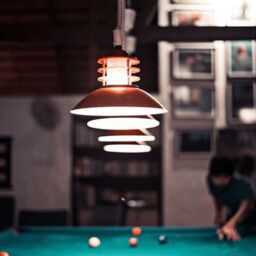If the light in the control pad on the top of your Sta-Rite pool and spa heater that is labeled “service system” is lit, the following should be done in order to diagnose why your Sta-Rite heater is not working. A systematic approach will help to narrow down the problem and possibly solve it without having to call for a repair person. There are numerous things that can go wrong, but many of the problems are simply fixed with the use of a few basic tools. For this first segment you will only need a screw driver or a 5/16 nut driver and a basic multi-meter. Additional segments will go into other aspects of the systematic problem solving.
Before starting any diagnosis there are a few things that need to be checked. These items are the first two things to check on any gas heater. This is a gas heater, so first is the gas to the heater turned on and do you have enough gas in the tank. Next is the electric to the heater on. Make sure all of the breakers and/or switches in the circuit to the heater are on. (By the way this last item should be the first thing you check on any piece of pool or spa equipment that is not working.)
Now start with the basics. Without proper water flow the heater will not work.
1. Is the pool pump running? Not running, NO water flow.
2. Does the filter on the system need to be cleaned? Again, if the water flow is compromised, the heater will not work. On a sand filter this is usually accomplished with a simple back wash to remove dirt and debris. A DE filter maybe helped with a back wash or may need a more thorough cleaning. A cartridge filter may need to have the cartridge removed and cleaned thoroughly or replaced if it is old and cleaning does not increase the water flow.
3. Are all the valves in the system in the correct positions? Maybe the flow to the heater has been turned off. And again the result is NO heat. Or some of the flow maybe by-passed away from the heater or restricted and the heater does not have enough flow to work.
4. The last item under water flow would be a bad water pressure switch. To get to the water pressure switch and be able to test it, you need to first remove the 2 piece outer shell from the heater. You will need to remove the four screws holding the sides together. The screws can be removed with a regular screwdriver or a 5/16 nut driver or socket wrench. The pressure switch is then found on the top right side of the water manifold as you face it. With your electric meter on ohms, the pressure switch should read as a dead short. The meter will read 0 or will beep. This is the same result you will get if you set your meter to ohms and touch the 2 leads on the meter together. If it reads open you have a problem. Open is a meter reading of nothing or a meter that reads like you have a meter which is on and switched to ohms and the leads are not touching anything. If you have verified that you have good water flow; your pressure switch is probably bad. You will need to get a new pressure switch and install it. If you get anything on your meter other than a dead short (closed) or a solid open, you have a problem. Anything in between means you could have a switch going bad or dirty contacts. Make sure you have good contacts. Clean the contacts and try your readings again.
To replace the pressure switch if it needs to be done. First turn off the pool pump. Then turn off the power to the heater. Remove the wires from the switch and unscrew the switch by turning it counterclockwise. Screw the new pressure switch in clockwise, being careful to put it in straight. It is plastic and has fine threads and can be damaged easily. Then connect the wires. I would recommend that if you have the ability that you put new connectors on the wires, but if they are clean and intact it is not an absolute necessity. Turn on the pool pump and then turn on the power. You can now close up the heater with its four screws and in a little while enjoy your heated pool.
This segment has only dealt with one of the most common reasons that a pool and spa heater does not work and heat your pool or spa. Come back for the continuing steps to go further.



